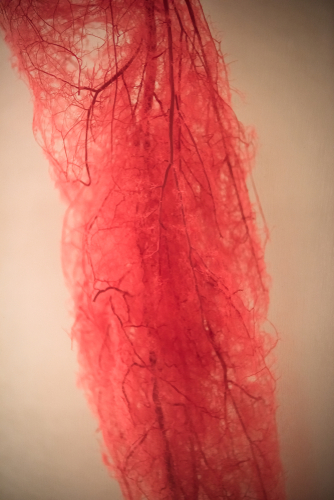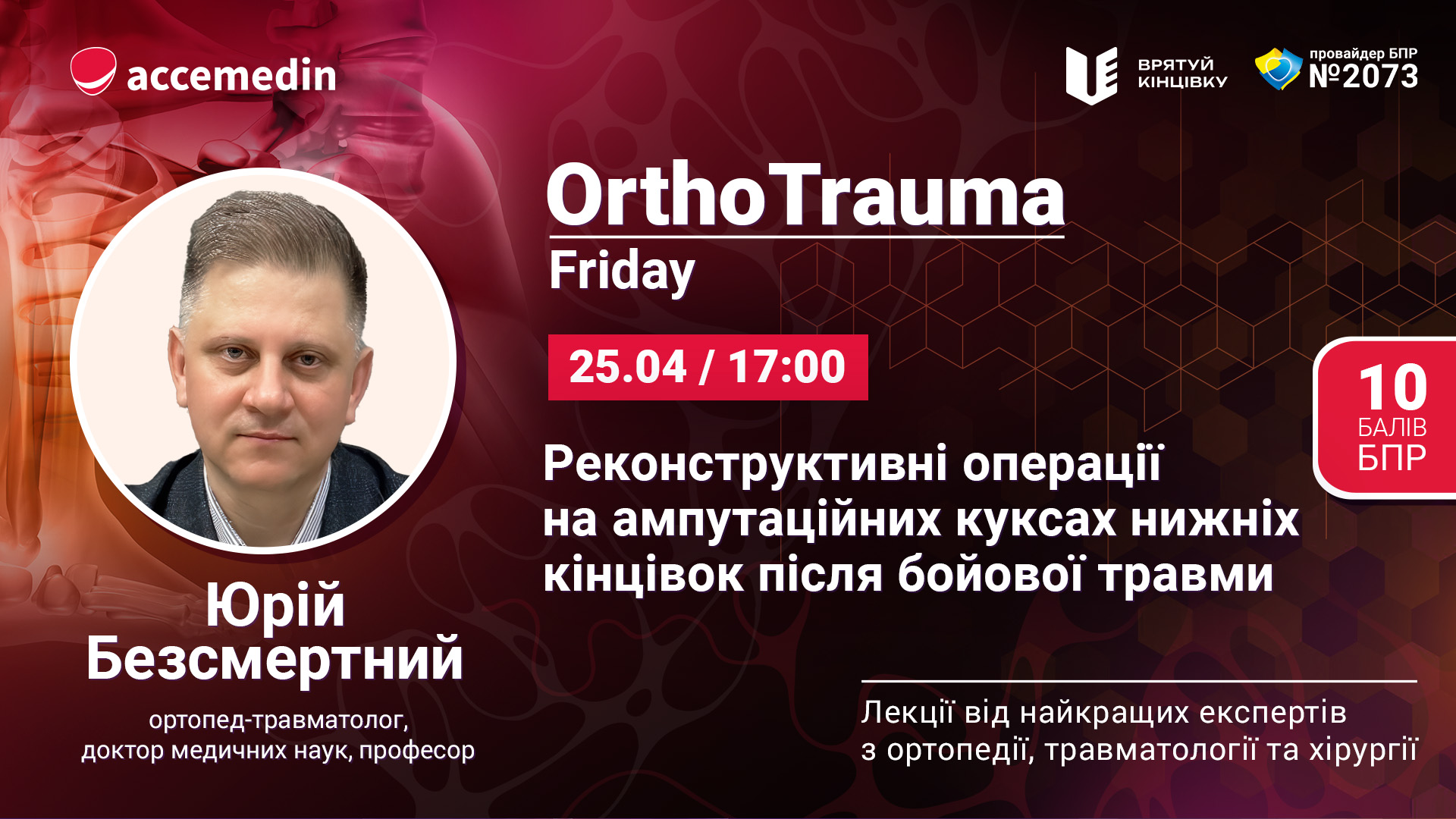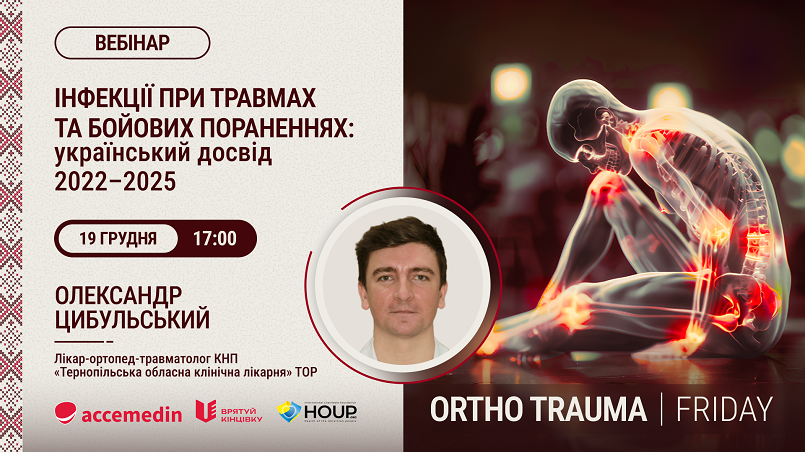They Lost Their Legs. Doctors and Health Care Giants Profited
Дата публікації: 20.07.2023
Автори: Відкриті джерела
Ключові слова: ампутація, атеросклероз, ендартеректомія, реваскуляризуючі операції

Kelly Hanna’s leg was amputated on a summer day in 2020, after a Michigan doctor who called himself the “leg saver” had damaged her arteries by snaking metal wires through them to clear away plaque.
It started with a festering wound on her left foot. Her podiatrist referred Ms. Hanna to Dr. Jihad Mustapha. Over 18 months, he performed at least that many artery-opening procedures on Ms. Hanna’s legs, telling her they would improve blood flow and prevent amputations.

They didn’t — for Ms. Hanna or many of his other patients. Surgeons at nearby hospitals had seen so many of his patients with amputations and other problems that they complained to Michigan’s medical board about his conduct. An insurance company told state authorities that 45 people had lost limbs after treatment at his clinics in the past four years.
Dr. Mustapha is no back-alley operator working in the shadows of the medical establishment, an investigation by The New York Times has found. With the financial backing of medical device manufacturers, he has become a leader of a booming cottage industry that peddles risky procedures to millions of Americans — enriching doctors and device companies and sometimes costing patients their limbs.
The industry targets the roughly 12 million Americans with peripheral artery disease, in which plaque, a sticky slurry of fat, calcium and other materials, accumulates in the arteries of the legs. For a tiny portion of patients, the plaque can choke off blood flow, leading to amputations or death.
But more than a decade of medical research has shown that the vast majority of people with peripheral artery disease have mild or no symptoms and don’t require treatment, aside from getting more exercise and taking medication. Experts said even those who do have severe symptoms, like Ms. Hanna, shouldn’t undergo repeated procedures in a short period of time.
Many people with peripheral artery disease also have heart disease or diabetes, which present serious risks. Such patients, already anxious about their health, are susceptible to warnings from doctors that, absent intrusive medical procedures, they could lose their legs.

Some doctors insert metal stents or nylon balloons to push plaque to the sides of arteries. Others perform atherectomies, in which a wire armed with a tiny blade or laser is deployed inside arteries to blast away plaque. Rigorous medical research has found that atherectomies are especially risky: Patients with peripheral artery disease who undergo the procedures are more likely to have amputations than those who do not.
The volume of these vascular procedures has been surging. The use of atherectomies, in particular, has soared — by one measure, more than doubling in the past decade, according to a Times analysis of Medicare payment data.
There are two reasons. First, the government changed how it pays doctors for these procedures. In 2008, Medicare created incentives for doctors to perform all sorts of procedures outside of hospitals, part of an effort to curb medical costs. A few years later, it began paying doctors for outpatient atherectomies, transforming the procedure into a surefire moneymaker. Doctors rushed to capitalize on the opportunity by opening their own outpatient clinics, where by 2021 they were billing $10,000 or more per atherectomy.
The second reason: Companies that make equipment for vascular procedures pumped resources into a fledgling field of medicine to build a lucrative market.
When doctors open their own vascular clinics, major parmaplayers are there to help with training and billing tips. The electronics giant Philips works with a finance company to offer loans for equipment and dangles discounts to clinics that do more procedures.
The Times searched a database of state loan filings for the 200 doctors who have billed Medicare the most for atherectomies since 2017. At least three-quarters either received loans from the device industry or work at clinics that have. Some loans have gone to doctors with well-documented histories of endangering patients.
The device industry rewards high-volume doctors with lucrative consulting and teaching opportunities. And it sponsors medical conferences and academic journals to bolster a niche medical field that favors aggressive interventions.
This self-sustaining ecosystem is worth $2 billion a year, analysts estimate. Insurers pay doctors per procedure. And because new equipment is needed each time, the companies also profit from repeat customers.
Dr. Mustapha declined to comment on Ms. Hanna’s case, citing health care privacy law. But he strongly defended his treatment of the seriously ill patients who form the bulk of his practice. He said his clinics have “very low” rates of complications, including 1.3 percent of patients having “major amputations” within 30 days of treatment.
“The vast majority of the patients we serve have had exceptional outcomes,” Dr. Mustapha said. “We have saved countless limbs — and lives.”
The vascular industry faces minimal regulation. Many medical devices sail through the FDA’s clearance process without much data showing they work. The clinics are not subject to the same safety regulations as hospitals. Even when regulators determine that doctors have performed unnecessary procedures, they generally impose paltry fines and let them continue practicing.
Fifteen surgeons told The Times they were frequently called in to fix problems caused by doctors in vascular clinics.
“Someone who cuts or inserts something into a patient for unnecessary work is the same as someone stabbing you in the street and taking your wallet,” said Dr. Russell Samson, a vascular surgeon in Florida.
‘A Clear Business Motive’
Medicare’s decision to reimburse doctors for procedures performed outside hospitals led to a proliferation of outpatient clinics specializing in everything from orthopedics to dermatology.
The policy also motivated doctors to perform more procedures, in part because private insurers tend to follow the federal agency’s lead. Before, doctors working in a hospital pocketed only a slice of what insurers paid, with the hospital getting the rest to cover overhead costs. Doctors who owned clinics could now collect the entire payment.
A decade ago, there were virtually no clinics to treat peripheral artery disease. Today, there are about 800, according to an industry trade group.
Atherectomy devices were first developed in the 1980s to clear blockages in arteries. Even then, they were controversial. Studies cast doubt on their safety and effectiveness in the heart.

In the ensuing decades, several companies began selling the devices to treat blockages in the legs. The F.D.A. sets a low bar for authorizing atherectomy tools and other medical devices: Companies just have to convince the agency that their devices are similar to existing products.
The turning point came in 2011, when Medicare began paying for outpatient atherectomies. That year, Medicare reimbursed doctors $86 million for the procedures, according to the Times analysis of Medicare data. By 2021, the most recent year for which data is available, the figure was $612 million.
The amount spent on atherectomies is far higher. Private insurers covered roughly three times as many procedures as Medicare did, according to Definitive Healthcare, a health analytics firm.
Yet a wide body of scientific research has found that for about 90 percent of people with peripheral artery disease — including those who experience the most common symptom, pain while walking, or have no symptoms — the recommended treatments are blood-thinning medications and lifestyle changes like getting more exercise or quitting smoking.
For some people with advanced forms of peripheral artery disease, atherectomies can be useful. But even for them, studies have found that atherectomies do not work better than less expensive methods of clearing blockages and restoring blood flow. Others have found that because atherectomies can further inflame patients’ arteries, they can lead to higher rates of amputations. And atherectomies tend to beget more atherectomies.
Some doctors who own their own clinics push patients to undergo screenings to catch peripheral artery disease in its early, asymptomatic stages. Doctors often encourage patients to get repeat procedures, weeks apart.
“There is a clear business motive for treating people with no symptoms,” said Dr. Caitlin Hicks, an associate professor of surgery at Johns Hopkins University School of Medicine who has studied the overuse of atherectomies.
Assembly Line
Of the 200 doctors who performed the most atherectomies, Dr. Mustapha stands out — both for the harm that patients and doctors say he has caused and for the support he has received from the device industry.
Dr. Mustapha’s ascent through vascular medicine is a rags-to-riches story that he has told frequently, including in promotional materials produced by G.E. Healthcare, which makes equipment used in vascular clinics. Born in Lebanon, he fled the war there and arrived in the United States in the 1980s as a teenager. He said he initially sold umbrellas on the streets of New York. After medical school, he eventually landed a job at Metro Health Hospital in Grand Rapids, Mich.
Dr. Mustapha’s website said he performed his first “limb-salvage treatment” more than a dozen years ago, “preventing the amputation of the leg of a 52-year-old woman.” Of all of his professional titles, the website says, he is proudest of “the Leg Saver.”
In 2018, he and his nephew, Dr. Fadi Saab, opened their first vascular clinic in Grand Rapids. Later that year, they opened another in Lansing. The business was called Advanced Cardiac & Vascular Centers for Amputation Prevention.
From 2013 to 2017, while Dr. Mustapha worked for Metro Health, he performed 358 atherectomies. In the next four years, he billed Medicare for more than 1,500. Dr. Saab billed the agency for 1,150 more.
Those atherectomies earned their clinics nearly $18 million from Medicare alone. That doesn’t include any procedures covered by private insurance.
Dr. Mustapha’s clinics at times felt like an assembly line, according to three former employees who requested anonymity because they still work in health care. Sometimes, they said, he performed procedures on two patients simultaneously.
Dr. Mustapha said that “procedures are scheduled with enough time so patients can be treated safely, kindly and respectfully.”
Dr. Ron VanderLaan, a cardiologist who briefly merged his practice with Dr. Mustapha’s in 2020, said he and his staff were pressured to refer as many patients as possible for vascular procedures at Dr. Mustapha’s clinics.
“They kept telling us we weren’t getting enough,” Dr. VanderLaan recalled.
Dr. Mustapha suggested Dr. VanderLaan was unreliable. He sued Dr. Mustapha’s clinic over his employment contract. And in 2019, Dr. VanderLaan was convicted of a misdemeanor, though it had no bearing on his medical license.
Rushed to the Hospital
In March 2020, an ambulance rushed Cheryl McAdams to a hospital from Dr. Mustapha’s Grand Rapids clinic, where he was performing his seventh procedure on her in two years. A device he was using broke off in her leg, causing internal bleeding, medical records show.
At the hospital, a vascular surgeon performed emergency surgery. He later filed a complaint about Dr. Mustapha with Michigan’s medical licensing board, and Ms. McAdams, 74, sued. Dr. Mustapha has denied the claims.

Seven other surgeons said in interviews that they had been called in to treat dozens of patients who had been harmed by Dr. Mustapha.
One was Ms. Hanna, 62. She arrived at McLaren Greater Lansing Hospital in July 2020, after 18 months of treatment by Dr. Mustapha.
By then, Dr. Lin had already treated several of Dr. Mustapha’s former patients. Some required amputations. Others needed leftover wires extracted from their legs. Like Ms. McAdams’s surgeon, Dr. Lin complained to Michigan’s licensing board. The complaint described severe complications that Dr. Mustapha’s treatments had caused in multiple patients.
The patients recalled to Dr. Lin how Dr. Mustapha had warned them that atherectomies were needed to save their legs, she said in an interview.
“They would cry and say they can’t believe this is happening to them,” Dr. Lin said.
Dr. Mustapha questioned Dr. Lin’s expertise but declined to comment on what she said about his patients. He also raised the possibility of Dr. Lin having competing interests, because Michigan State University, her employer, is opening a vascular clinic in Lansing. Dr. Lin said that had nothing to do with her complaints, which long predated the new clinic.
Starting in 2020, the medical licensing board investigated her complaint and referred it to Michigan’s attorney general, who brought a disciplinary action against Dr. Mustapha. An expert hired by the state to review eight patient cases concluded that his practice “was characterized by overtreatment and poor documentation.” The expert found that in some cases, including Ms. Hanna’s, unnecessary procedures hastened amputations.
The state’s expert also cited the case of Traves Louch as another example of someone who underwent “a concerning number” of unnecessary procedures — four in less than three weeks.
After the last one, blood stopped flowing to Mr. Louch’s left foot. Ten days later, his lower leg was amputated.

“What the signs say on his offices is to prevent and help prevent amputations,” said Mr. Louch, 50. “And here I am with half my leg gone.”
Dr. Mustapha declined to comment on individual patients.
In April, he reached a settlement with the Michigan attorney general, agreeing to pay $25,000 and to take medical education courses. He did not acknowledge wrongdoing.
Dr. Mustapha said the state could have imposed a tougher punishment and the fact that it didn’t “speaks for itself.” He also said that members of the medical board lacked his experience in treating patients with advanced peripheral artery disease.
The state board is also investigating complaints that Blue Cross Blue Shield of Michigan filed last year against Dr. Mustapha and Dr. Saab. In its complaints, which The Times obtained through a public records request, the insurer said it had found that between 2017 and 2021, the doctors performed procedures on the same patients over and over, sometimes “within days of each other.”
Forty-five Blue Cross patients needed amputations after the doctors treated them, the insurer said.
“In each case, we made the treatment decision best suited to the patient’s condition,” Dr. Saab said. “No medical procedure is 100 percent efficacious in every circumstance. Some patients require multiple treatments, and some limbs cannot be saved despite our best efforts.”
Dr. Mustapha referred The Times to a handful of patients who raved about his treatment. Two said in interviews that Dr. Mustapha saved their limbs.
Another said he began seeing Dr. Mustapha at his doctor’s advice, even though he had no pain in his legs and was physically active. The man said Dr. Mustapha had been performing procedures on him for 14 years. In 2021, his lower leg was amputated.
A Symbiotic Relationship
Dr. Mustapha owes his rise in part to the companies whose devices and equipment he uses.
In a testimonial on the Philips website, Dr. Mustapha said that “from site identification to capital financing, Philips assisted every step of the way” when he and Dr. Saab opened their first vascular clinic.
Philips removed the testimonial following questions from The Times. Dr. Mustapha told The Times that the testimonial was mistaken and Philips did not help him select a site.
Troy Kirkpatrick, a spokesman for Becton, Dickinson & Company, which bought Bard in 2017, said collaboration between device companies and doctors is valuable. He described Dr. Mustapha as a leading expert on peripheral artery disease, whose work “aligns with our own ‘Love Your Limbs’ initiative in preventing amputations and improving patients’ lives.”
Dr. Mustapha made the most money — $633,200 — from Cardiovascular Systems International, known as C.S.I. Dr. Saab also received hundreds of thousands of dollars.
Dr. Mustapha said the payments were for teaching and consulting “so that I can spread the word and raise awareness” about treatment for peripheral artery disease.
Dr. Saab said, “All the medical decisions I make are motivated solely by what’s in the best interest of my patients.”
ДЖЕРЕЛО: https://www.nytimes.com/
Щоб дати відповіді на запитання до цього матеріалу та отримати бали,
будь ласка, зареєструйтеся або увійдіть як користувач.
Реєстрація
Вхід
Матеріали з розділу

Запис майстер-класу «Реконструктивні опера ...

Клінічний випадок: незвичайна травма зап'я ...

Остеопороз після інсульту: огляд причин та ...

Запис вебінару «Інфекції при травмах та бо ...

FDA надає революційну терапію інфігратиніб ...

Шлях військовослужбовця до отримання стату ...


